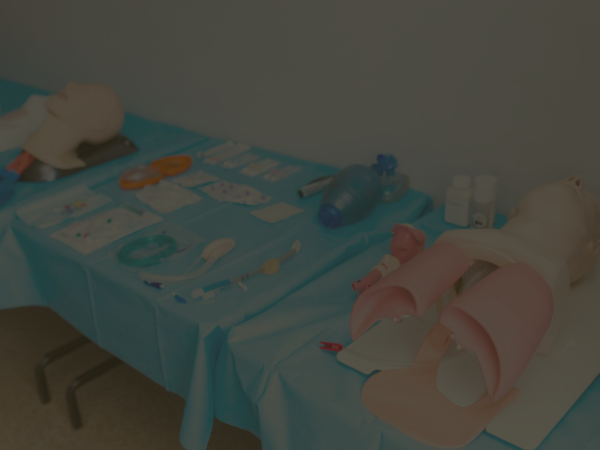Your cart is currently empty!
2022 OSHA Requirements for Bloodborne Pathogen
OSHA has many guidelines businesses have to follow here in the US to both keep employees safe and avoid undesirable regulatory repercussions. Training in Bloodborne Pathogen (BBP) is one of these critical requirements. As we enter 2022, now’s the time to review OSHA requirements and find out the fastest and easiest way to ensure you’re OSHA-compliant with 2022 Bloodborne Pathogen training.
What Are Bloodborne Pathogens?
A bloodborne pathogen is any infectious biologic found in human blood. Employees face varying risks of exposure on the job, so employers must evaluate this risk and determine who needs BBP training each year. Professionals like doctors, nurses, EMTs, housekeepers, daycare teachers, are just some examples. Even in safe environments that follow protocols, employees can risk pricks or sticks. They may need to assist a co-worker during a life-threatening event.
OSHA Enforcement of Bloodborne Pathogen Standards
OSHA penalties for non-compliance include a fee of up to $14,502 per violation for a serious offense, plus $14,502 per day if a cited organization refuses to correct the issues quickly. For acts that OSHA deems repeated and willful, they may charge an organization up to $145,027 per violation.
The Occupational Health and Safety Administration (OSHA.gov) prioritizes inspections based on:
- Imminent danger
- Fatalities
- Worker complaints
What Are the BBP Risks?
Some of the most common pathogens of concern are:
- Hepatitis B
- Hepatitis C
- HIV
Workers also face less common but dangerous risks of exposure to pathogens like malaria, syphilis, antibiotic-resistant bacteria, including but not limited to Methicillin-resistant Staphylococcus aureus (MRSA).
Some Employees At Greater Risk than Others
 Some employees have certain comorbidities that impact their immune systems. They face an increased chance of a bad outcome with pathogens that might otherwise cause mild infections in a healthy individual. Of course, this fact has come front and center recently with COVID-19.
Some employees have certain comorbidities that impact their immune systems. They face an increased chance of a bad outcome with pathogens that might otherwise cause mild infections in a healthy individual. Of course, this fact has come front and center recently with COVID-19.
In cases of BBP infection, diabetes is of particular concern because it’s so common among healthcare workers and the general public.
According to the Association of Professionals in Infection Control and Epidemiology (APIC.org), high blood sugar disrupts immune function. It hinders blood flow in people who’ve had poorly controlled sugar for some time. This allows infections to take hold quickly and act upon the body rapidly.
According to the American Diabetes Association (Diabetes.org), in the US, 34.2 million (10.5%) people have diabetes 1 or 2, primarily type 2. Researchers estimate that within that number, 7.8 million people remain undiagnosed.
While there’s no way to know precisely how many of these are healthcare workers or high-risk professionals, a study published on NIH.gov reviewed the records of over 111,000 nurses and non-nurses who were otherwise similar to reduce confounding factors in the data. They found that female nurses, on average, received their type 2 diabetes diagnosis almost two years younger than non-nurses (46.98 compared to 48.31, respectively). The study also showed the nurses were slightly less likely to develop diabetes than the non-nurses.
Of course, an early diagnosis does not suggest nurses actually developed diabetes earlier. They work in healthcare may explain why they get diagnosed earlier. This study shows that healthcare workers have a similar likelihood of having diabetes (10%) to the general population, increasing their risk in the workplace.
What Does OSHA Expect of Employers?
OSHA expects you to identify and reduce exposure risks, eliminating dangers when possible. Beyond that, according to OSHA’s Bloodborne Pathogens Standard 29 CFR 1910.1030 (osha.gov), they expect you to put proper procedures, controls, protective gear, training, surveillance, vaccination requirements, and training in place to ensure employees have the physical and mental tools they need to stay safe.
Training is important. But by far, using engineering controls to stop exposure is the most impactful step you can take. These include using safer equipment, needle guards, safety plastic, etc, as well as having clear procedures for people to follow. For example, to prevent needle sticks, OSHA suggests:
- Safe Handling procedures developed and communicated in advance
- Using safer alternatives when possible
- Activating the safety features of devices
- Never passing sharps between people
- Never recapping, cutting, or breaking used needles
- Have a proper disposal process and necessary equipment for disposal
- Complete Bloodborne Pathogen Training with your team
OSHA Bloodborne Pathogen Training Expectations for Employers
According to the Training Requirements in the OSHA Standards manual, each employer must provide bloodborne pathogen training to exposure-risk employees at no cost to the employee and during work hours. The employer must have a system in place to verify that each employee completed the training and document that attendance and completion dates.
Employees should receive this training before beginning work in a position where exposure risk exists and then every year after that. You must time the annual training to complete within one year of the last training received. Suppose a job change occurs after the annual training. OSHA now expects you to ensure the additional people who face exposure (or you hire) get proper training before exposure. In that case, you can’t wait until the next scheduled training session.
OSHA also provides some minimum requirements for this training. Note: This is not a complete list.
- An accessible text written in language understandable to employees outlines regulatory expectations with a summary explanation. Businesses often place these documents on bulletin boards.
- A basic explanation of how diseases pass from one person to another through blood and body fluids
- The symptoms of common bloodborne diseases
- An explanation of the employer’s plan to reduce exposure, of which copies must be available for employees
- Information about handling, location, disposal, decontamination, and handling an exposure event
- Information on how to use, clean, or dispose of safety devices, personal protection equipment (PPE), and other equipment properly.
- How events are reported to management
The training person must be knowledgeable in all areas to be discussed. Additional training may be warranted if someone is working in a place where exposure risk is especially high, such as a lab that researches HIV.
Employers are also expected to follow the plans they’ve created and enforce them in the workplace, so BBP training isn’t something employees do and forget about. It’s part of their work culture.
Training records must be stored for three years.
Do OSHA Requirements Cover Contractors and Volunteers?
It’s natural to wonder if there are exceptions. Often, employers are exempt from certain requirements for contract employees. However, in the case of OSHA training requirements, a contractor, freelancer, temporary employee, part-time employee, etc. must all receive BBP training as outlined above.
OSHA doesn’t, however, regulate training for volunteers for non-profits, although your state or local government may have special regulations you need to follow. Environmental Protection Agency (EPA) regulations may also apply regarding hazardous waste disposal.
How to Recognize Bloodborne Pathogen Hazards
The National Library of Medicine (NLM) estimates that in the healthcare industry alone, 5.6 million workers are at risk. According to the CDC, healthcare workers generally expose themselves or others in two ways:
- Percutaneous injury incident – caused by a needle prick or cut from a scalpel or other sharp device
- Mucocutaneous exposure incident – when someone comes into contact with other bodily fluids that may or may not have blood in them
BBP training covers both types of exposure prevention.
The CDC notes that unless protection equipment is visible and accessible, people are unlikely to go out of their way to wear it. If a healthcare facility doesn’t make safety procedures a very visible part of the work culture, people are also unlikely to follow safety procedures. This puts both employees and their employers at risk. It may even endanger patients.
Other Potentially Infectious Materials (OPIM) :
When OSHA talks about BBP, they refer to “human blood, human blood components, and products made from human blood”. However, they also note that facilities should not ignore safety protocols related to OPIM. OPIM can include:
 Semen
Semen- Vaginal secretions
- Cerebrospinal fluid
- Synovial fluid (joint fluids)
- Pleural fluid (fluid in and around the lungs)
- Pericardial fluid (fluid in sacs around the heart)
- Peritoneal fluid (fluid found in the abdomen)
- Amniotic fluid (fluid from the uterus, which protects the unborn baby (fetus))
- Saliva, especially during dental procedures
- Anybody fluid that is visibly contaminated with blood
This list significantly expands the types of workers who may experience exposure and need BBP training to meet OSHA requirements.
- Police officers
- Fire and rescue professionals
- Regular volunteers
- Those working with vulnerable populations (homeless, elderly, the mentally or intellectually challenged)
- Teachers
- Daycare professionals
- Factory workers who respond to incidents
- Dental employees
- Housekeeping in any setting (hotels, hospitals, homes, etc.)
- Medical students
- Human resources professionals
The Easiest Way for Employers To Meet BBP OSHA Requirements
While you should create and provide worksite-specific plans and accessible documents under OSHA requirements, you and your employees can complete BBP training online, any time, on many devices, and anywhere people have the Internet.
If you’re onboarding a new employee, you don’t have to host an in-impromptu training. Just sign them up for an online bloodborne pathogen course, request their certificate upon completion, and keep this documentation on file to verify that completion. You can do this for job role changes and annual training as well.
What Employers Should Look for in BBP Courses
OSHA requirements provide some flexibility about how employers conduct courses to deal with differing workplace needs. But they’re specific about what qualified training includes.
Look for training that adheres to Bloodborne Pathogens Standard 29 CFR 1910.1030. That way, you know you’ve covered should OSHA request training documentation. Also, consider the training companies’ reviews on a third-party site like Trustpilot to confirm your employees are completing training with a reputable company.
Be sure to have your employees take a certification exam so they receive their BBP certificate. This meets the OSHA guidelines that require employers to verify that employees “understand” what they’ve learned. It provides you with clear documentation for each employee.
How to Save Money on BBP Training
Hiring a competent trainer to develop a comprehensive training plan and teach many times a year, sometimes to just one new employee, is not cost-effective.
At the same time, developing and ensuring your own online training is continually updated to meet current requirements is a hassle and can get expensive. On top of creating the course, you must have a system in place to verify that employees actually completed and understood it. That may require additional technology investments.
Allowing a company like Save-a-Life to provide your training, tests, and documentation frees you up for other business requirements. You won’t have to worry about who’s taken the training and whether they understood it or took it on time because Save-a-Life keeps track of all of that for you. It’s all 100% online and easy-to-use.
Be sure to ask about team discounts and CPR, First Aid + BBP course bundle to save even more money. For healthcare providers, you can also have employees get certified in Basic Life Support (BLS), Advanced Cardiac Life Support (ACLS), and Pediatric Advanced Cardiac Life Support (PALS) based upon ILCOR guidelines and all Joint Commission compliant. Some courses also earn AMA Category 1 or Category 2 credits, so healthcare employees can earn CME to put toward their license renewal.
How to Confirm Each Employee Has Completed BBP Training
To confirm and record completion and understanding of BBP training, you’ll request a copy of the certificate from each employer. After passing the test, they will receive a digital copy of their certification. You can keep these for your records and can provide them to OSHA regulators as needed.
Are you meeting OSHA requirements for bloodborne pathogen training? Check out our BBP online certification course and share your experience completing it.









Leave a Reply